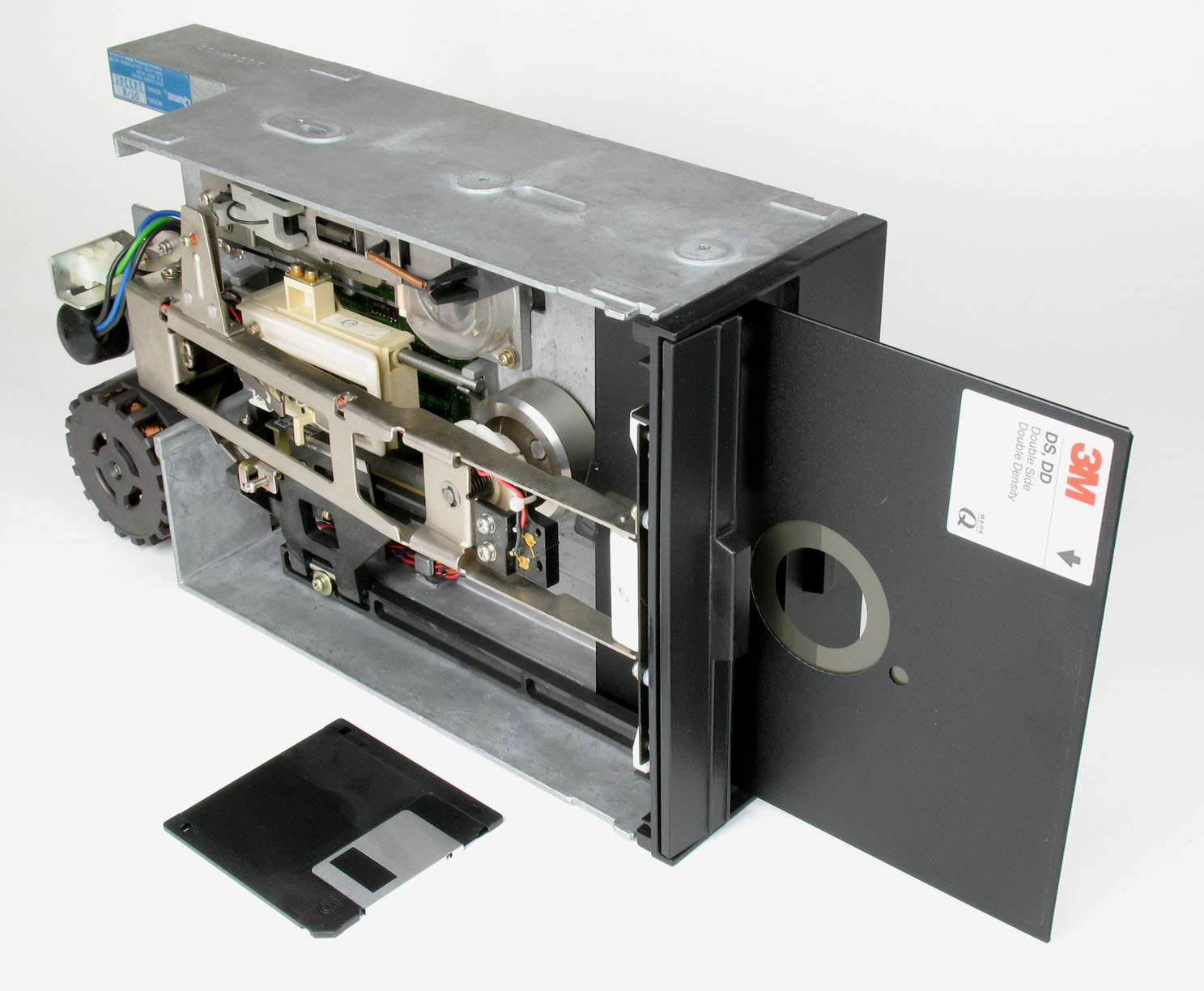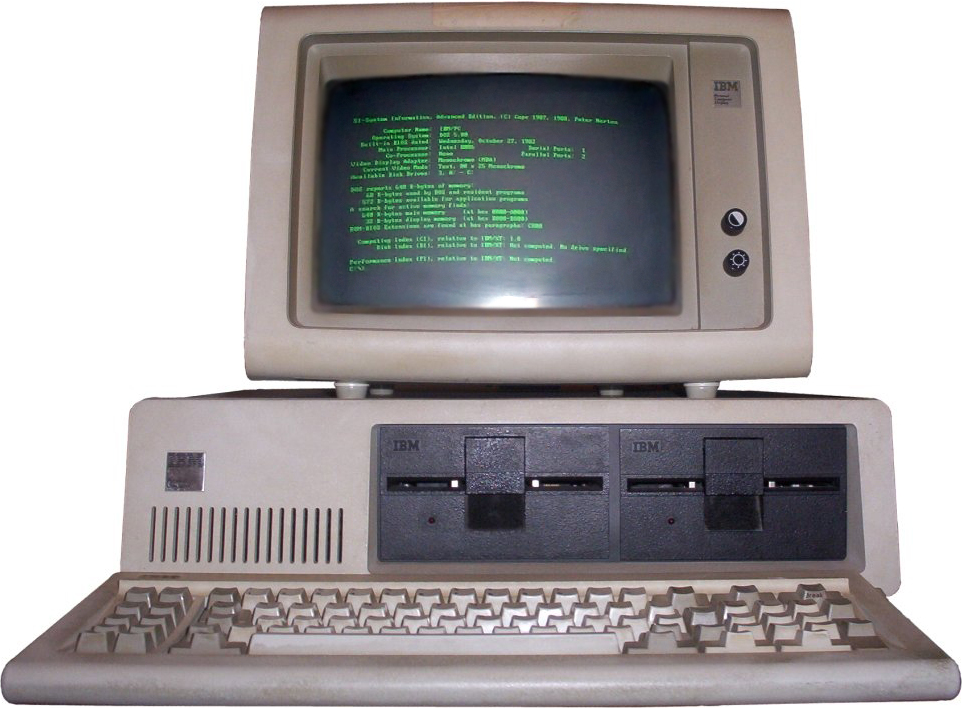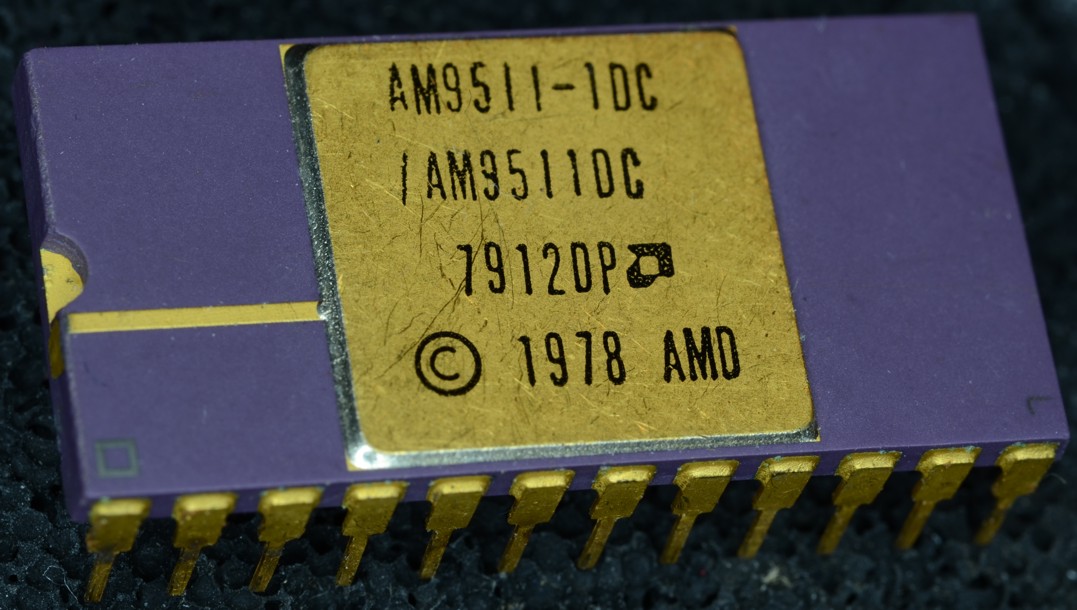|
ES PEVM
ES PEVM (ЕС ПЭВМ) was a Soviet Union, Soviet clone (computer science), clone of the IBM PC in the 1980s. The ES PEVM models lineup also included analogues of IBM PC XT, IBM PC AT, IBM XT/370. The computers and software were adapted in Minsk, Belarus, at the Scientific Research Institute of Electronic Computer Machines (НИИ ЭВМ). They were manufactured in Minsk as well, at Minsk Production Group for Computing Machinery (Минское производственное объединение вычислительной техники (МПО ВТ)). Description The first models of ES PEVM (ES-1840, ES-1841, ES-1842), unlike the IBM PC, had two units: a system unit and a floppy drives unit. These models used a backplane instead of the main board. Although the system bus was compatible with Industry Standard Architecture, ISA bus, it used a different type of connector, so the IBM PC expansion cards could not be installed in ES PEVM. Later models (ES-1843, ES-1849 ... [...More Info...] [...Related Items...] OR: [Wikipedia] [Google] [Baidu] |
Personal Computer
A personal computer, commonly referred to as PC or computer, is a computer designed for individual use. It is typically used for tasks such as Word processor, word processing, web browser, internet browsing, email, multimedia playback, and PC game, gaming. Personal computers are intended to be operated directly by an end user, rather than by a computer expert or technician. Unlike large, costly minicomputers and mainframes, time-sharing by many people at the same time is not used with personal computers. The term home computer has also been used, primarily in the late 1970s and 1980s. The advent of personal computers and the concurrent Digital Revolution have significantly affected the lives of people. Institutional or corporate computer owners in the 1960s had to write their own programs to do any useful work with computers. While personal computer users may develop their applications, usually these systems run commercial software, free-of-charge software ("freeware"), which i ... [...More Info...] [...Related Items...] OR: [Wikipedia] [Google] [Baidu] |
K1810VM86
The K1810VM86 () is a Soviet 16-bit microprocessor, a clone of the Intel 8086 CPU with which it is binary and pin compatible. It was developed between 1982 and 1985. The original K1810VM86 supported a clock frequency of up to 5 MHz while up to 8 MHz were allowed for the later K1810VM86M (''К1810ВМ86M''; corresponding to Intel 8086-2). The K1810VM86 was manufactured plastic 40-pin dual in-line package (as KR1810VM86 / ''КР1810ВМ86'') or in a 40-pin ceramic dual in-line package (as KM1810VM86 / ''КМ1810ВМ86'' for the commercial version or M1810VM86 / ''М1810ВМ86'' for the military version). A clone of the related Intel 8088 with its 8-bit bus was manufactured as the K1810VM88 (), also in plastic and ceramic packages. Technology and support chips The K1810VM86 was manufactured with an n-MOS process. The family consists of the following chips: For brevity, the table above lists only the chip variants in a plastic DIP (prefix ''КР''). Not liste ... [...More Info...] [...Related Items...] OR: [Wikipedia] [Google] [Baidu] |
BIOS
In computing, BIOS (, ; Basic Input/Output System, also known as the System BIOS, ROM BIOS, BIOS ROM or PC BIOS) is a type of firmware used to provide runtime services for operating systems and programs and to perform hardware initialization during the booting process (power-on startup). The firmware comes pre-installed on the computer's motherboard. The name originates from the Basic Input/Output System used in the CP/M operating system in 1975. The BIOS firmware was originally proprietary to the IBM PC; it was reverse engineered by some companies (such as Phoenix Technologies) looking to create compatible systems. The interface of that original system serves as a ''de facto'' standard. The BIOS in older PCs initializes and tests the system hardware components ( power-on self-test or POST for short), and loads a boot loader from a mass storage device which then initializes a kernel. In the era of DOS, the BIOS provided BIOS interrupt calls for the keyboard, display, st ... [...More Info...] [...Related Items...] OR: [Wikipedia] [Google] [Baidu] |
COM Port
Com or COM may refer to: Computing * COM (hardware interface), a serial port interface on IBM PC-compatible computers * COM file, or .com file, short for "command", a file extension for an executable file in MS-DOS * .com, an Internet top-level domain, originally short for "commercial" * Component Object Model, a Microsoft software interface technology * Computer-on-module, a type of single-board computer Transport * Comair (United States), an airline which was a wholly owned subsidiary of Delta Air Lines by ICAO airline designator Other * Calcium oxalate monohydrate, the mineral whewellite and a common component of kidney stones * ''COM'' (manga magazine) * Cốm, green rice dish in Vietnam * Common rail (electricity), a common path of currents in an electronic circuit, often for the ground * Center of mass * Center-of-momentum frame * Coma Berenices (constellation), standard astronomical abbreviation * Comoros, ISO 3166-1 alpha-3 country code * Boston University Col ... [...More Info...] [...Related Items...] OR: [Wikipedia] [Google] [Baidu] |
Serial Interface
A serial port is a serial communication interface through which information transfers in or out sequentially one bit at a time. This is in contrast to a parallel port, which communicates multiple bits simultaneously in parallel. Throughout most of the history of personal computers, data has been transferred through serial ports to devices such as modems, terminals, various peripherals, and directly between computers. While interfaces such as Ethernet, FireWire, and USB also send data as a serial stream, the term ''serial port'' usually denotes hardware compliant with RS-232 or a related standard, such as RS-485 or RS-422. Modern consumer personal computers (PCs) have largely replaced serial ports with higher-speed standards, primarily USB. However, serial ports are still frequently used in applications demanding simple, low-speed interfaces, such as industrial automation systems, scientific instruments, point of sale systems and some industrial and consumer products. Serve ... [...More Info...] [...Related Items...] OR: [Wikipedia] [Google] [Baidu] |
Floppy Drive
A floppy disk or floppy diskette (casually referred to as a floppy, a diskette, or a disk) is a type of disk storage composed of a thin and flexible disk of a magnetic storage medium in a square or nearly square plastic enclosure lined with a fabric that removes dust particles from the spinning disk. The three most popular (and commercially available) floppy disks are the 8-inch, 5¼-inch, and 3½-inch floppy disks. Floppy disks store digital data which can be read and written when the disk is inserted into a floppy disk drive (FDD) connected to or inside a computer or other device. The first floppy disks, invented and made by IBM in 1971, had a disk diameter of . Subsequently, the 5¼-inch (133.35 mm) and then the 3½-inch (88.9 mm) became a ubiquitous form of data storage and transfer into the first years of the 21st century. 3½-inch floppy disks can still be used with an external USB floppy disk drive. USB drives for 5¼-inch, 8-inch, and other-size floppy disks are rare t ... [...More Info...] [...Related Items...] OR: [Wikipedia] [Google] [Baidu] |
Color Graphics Adapter
The Color Graphics Adapter (CGA), originally also called the ''Color/Graphics Adapter'' or ''IBM Color/Graphics Monitor Adapter'', introduced in 1981, was IBM's first color graphics card for the IBM PC and established a De facto standard, de facto computer display standard. Hardware design The original IBM CGA graphics card was built around the Motorola 6845 display controller, came with 16 kilobytes of video memory built in, and featured several graphics and text modes. The highest display resolution of any mode was 640 × 200, and the highest color depth supported was 4-bit (16 colors). The CGA card could be connected either to a direct-drive CRT monitor using a 4-bit digital (Transistor-transistor logic, TTL) RGB(I), RGBI interface, such as the IBM 5153 color display, or to an NTSC-compatible television or composite video computer monitor, monitor via an RCA connector. The RCA connector provided only baseband video, so to connect the CGA card to a television set w ... [...More Info...] [...Related Items...] OR: [Wikipedia] [Google] [Baidu] |
MC6845
The Motorola 6845, or MC6845, is a display controller that was widely used in 8-bit computers during the 1980s. Originally intended for designs based on the Motorola 6800 CPU and given a related part number, it was more widely used alongside various other processors, and was most commonly found in machines based on the Zilog Z80 and MOS 6502. The 6845 is not an entire display solution on its own; the chip's main function is to properly time access to the display memory, and to calculate the memory address of the next portion to be drawn. Other circuitry in the machine then uses the address provided by the 6845 to fetch the pattern and then draw it. The implementation of that hardware is entirely up to the designer and varied widely among machines. The 6845 is intended for character displays, but could also be used for pixel-based graphics, with some clever programming. Among its better-known uses are the BBC Micro, Amstrad CPC, and Videx VideoTerm display cards for the Apple II. ... [...More Info...] [...Related Items...] OR: [Wikipedia] [Google] [Baidu] |
Bulgaria
Bulgaria, officially the Republic of Bulgaria, is a country in Southeast Europe. It is situated on the eastern portion of the Balkans directly south of the Danube river and west of the Black Sea. Bulgaria is bordered by Greece and Turkey to the south, Serbia and North Macedonia to the west, and Romania to the north. It covers a territory of and is the tenth largest within the European Union and the List of European countries by area, sixteenth-largest country in Europe by area. Sofia is the nation's capital and List of cities and towns in Bulgaria, largest city; other major cities include Burgas, Plovdiv, and Varna, Bulgaria, Varna. One of the earliest societies in the lands of modern-day Bulgaria was the Karanovo culture (6,500 BC). In the 6th to 3rd century BC, the region was a battleground for ancient Thracians, Persians, Celts and Ancient Macedonians, Macedonians; stability came when the Roman Empire conquered the region in AD 45. After the Roman state splintered, trib ... [...More Info...] [...Related Items...] OR: [Wikipedia] [Google] [Baidu] |
IBM Monochrome Display Adapter
The Monochrome Display Adapter (MDA, also MDA card, Monochrome Display and Printer Adapter, MDPA) is IBM's standard video display card and computer display standard for the IBM PC introduced in 1981. The MDA does not have any pixel-addressable graphics modes, only a single monochrome text mode which can display 80 columns by 25 lines of high-resolution text characters or symbols useful for drawing forms. Hardware design The original IBM MDA was an 8-bit ISA card with a Motorola 6845 display controller, 4 KB of RAM, a DE-9 output port intended for use with an IBM monochrome monitor. A parallel port for attachment of a printer is also included, avoiding the need to purchase a separate card. Capabilities The MDA was based on the IBM System/23 Datamaster's display system, and was intended to support business and word processing use with its sharp, high-resolution characters. Each character is rendered in a box of 9 × 14 pixels, of which 7 � ... [...More Info...] [...Related Items...] OR: [Wikipedia] [Google] [Baidu] |
Random-access Memory
Random-access memory (RAM; ) is a form of Computer memory, electronic computer memory that can be read and changed in any order, typically used to store working Data (computing), data and machine code. A random-access memory device allows data items to be read (computer), read or written in almost the same amount of time irrespective of the physical location of data inside the memory, in contrast with other direct-access data storage media (such as hard disks and Magnetic tape data storage, magnetic tape), where the time required to read and write data items varies significantly depending on their physical locations on the recording medium, due to mechanical limitations such as media rotation speeds and arm movement. In today's technology, random-access memory takes the form of integrated circuit (IC) chips with MOSFET, MOS (metal–oxide–semiconductor) Memory cell (computing), memory cells. RAM is normally associated with Volatile memory, volatile types of memory where s ... [...More Info...] [...Related Items...] OR: [Wikipedia] [Google] [Baidu] |
Coprocessor
A coprocessor is a computer processor used to supplement the functions of the primary processor (the CPU). Operations performed by the coprocessor may be floating-point arithmetic, graphics, signal processing, string processing, cryptography or I/O interfacing with peripheral devices. By offloading processor-intensive tasks from the main processor, coprocessors can accelerate system performance. Coprocessors allow a line of computers to be customized, so that customers who do not need the extra performance do not need to pay for it. Functionality Coprocessors vary in their degree of autonomy. Some (such as FPUs) rely on direct control via coprocessor instructions, embedded in the CPU's instruction stream. Others are independent processors in their own right, capable of working asynchronously; they are still not optimized for general-purpose code, or they are incapable of it due to a limited instruction set focused on accelerating specific tasks. It is common for these to b ... [...More Info...] [...Related Items...] OR: [Wikipedia] [Google] [Baidu] |









